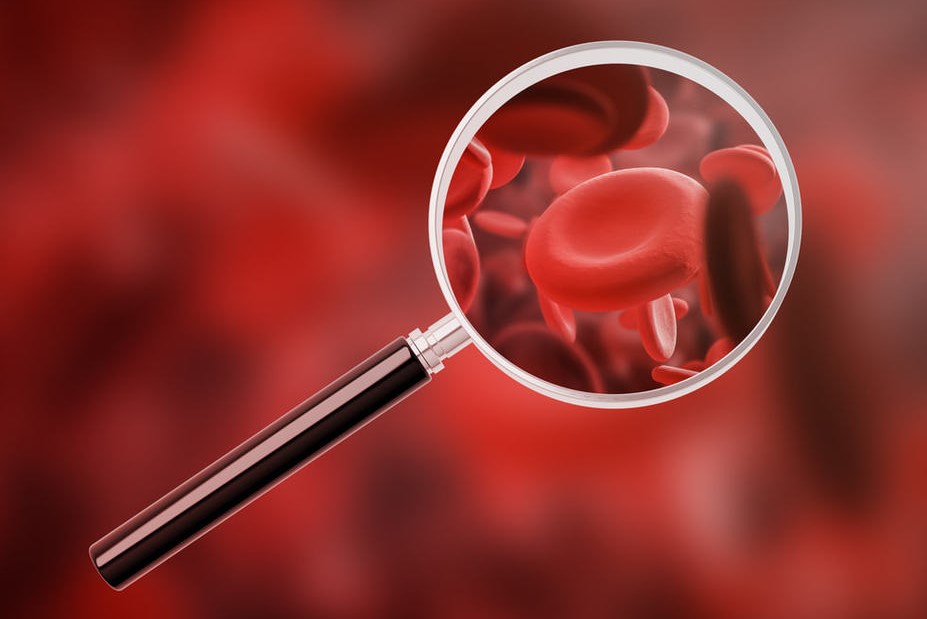
Blood coagulation: Von Willebrand Factor
Von Willebrand Factor is an important protein for blood coagulation. Its deficiency causes Von Willebrand haemorrhagic disease
Von Willebrand factor (VWF) is a protein that plays a key function in the early stages of blood clotting (haemostasis)
Initially, Von Willebrand factor promotes the adhesion of platelets to damaged blood vessel walls and subsequently acts as a bridge between one platelet and another, acting as a glue and thus promoting clot formation.
It also binds coagulation factor VIII, protecting it from degradation by protein-fragmenting enzymes (proteases).
Deficiency of the factor results in a disease known as Von Willebrand Disease, the most frequent hereditary haemorrhagic disease.
Von Willebrand Disease is classified into three main groups, based on the type of Von Willebrand factor deficiency:
- Type 1 is the most frequent form, characterised by a partial quantitative defect in Von Willebrand factor, usually resulting in mild to moderate bruising and bleeding;
- Type 2 is the form characterised by a defect in Von Willebrand factor function, which in turn is subdivided into four subtypes: 2A, 2B, 2M and 2N;
- Type 3 is the form characterised by a total quantitative defect in Von Willebrand factor, with moderate to severe symptoms often appearing as early as childhood.
Laboratory tests are performed on venous blood samples and include:
- VWF:Ag, measures the amount of factor present in the blood;
- VWF:RCo, assesses the functionality of V.W. factor;
- aPTT (activated partial thromboplastin time): measures the number of seconds required for clot formation in the blood sample, after the addition of appropriate reagents;
- FVIII (Factor VIII): measures the amount of Factor VIII in the blood;
- Platelet count: counts the number of platelets in the blood;
- VWF:FVIII, V.W. factor VIII binding test;
- VWF:CB, test for Von Willebrand factor binding to collagen;
- Ristocetin-induced platelet aggregation assay (RIPA): the method is based on the ability of the antibiotic ristocetin to stimulate the in vitro interaction of Von Willebrand factor with platelets and determine platelet agglutination;
- Multimeric analysis: tests the distribution of multimers. Von Willebrand factor is a multimeric protein complex, i.e. composed of subunits of different sizes. This test verifies the distribution of different subunits to diagnose type 2 disease;
- Molecular tests: genetic tests to confirm the presence of type 1, 2 or 3 disease.
Von Willebrand factor tests are used to diagnose Von Willebrand disease
Each laboratory has its own reference intervals depending on the type of method and the type of reagents used.
For this reason, it is preferable to consult the normality intervals given on the report.
The newborn at birth has increased Von Willebrand factor values that reach normal values after 6 months of age.
The interpretation of Von Willebrand factor test results and the definition of the subtypes of Von Willebrand disease are quite complex:
- aPTT: can be normal or prolonged depending on the concentration of factor VIII;
- Factor VIII: may be normal or decreased. Decreased in 2N subtypes and greatly decreased in type 3;
- Platelet count: usually normal. There may be a slight decrease in platelet count (plateletopenia) in patients with subtype 2B.
A slight alteration of coagulation tests with a partial VWF:Ag deficiency may indicate a quantitative Von Willebrand factor deficiency characteristic of V.W. type 1 disease.
If the VWF:Ag test yields normal results but impaired function is found, it could be Von Willebrand Disease type 2.
However, diagnostic confirmation and precise definition of the subtype requires further investigative testing.
The presence of very low concentrations of Von Willebrand factor and Factor VIII are characteristic of Von Willebrand disease type 3.
This disease is usually diagnosed in paediatric age, in children with severe and recurrent haemorrhagic episodes.
An increase in Von Willebrand factor in the blood may be due to the presence of infection, inflammation, trauma, pregnancy, oral contraceptives, liver disease, vasculitis, thrombotic thrombocytopenic purpura and haemolytic uremic syndrome.
Low levels of Von Willebrand factor are seen in people with Von Willebrand Disease
Furthermore, it has been seen that people with blood type 0 have lower levels of Von Willebrand factor than those with blood type other than 0.
Read Also
Emergency Live Even More…Live: Download The New Free App Of Your Newspaper For IOS And Android
Blood Diseases: Polycythaemia Vera, Or Vaquez Disease
Creatinine, Detection In Blood And Urine Indicates Kidney Function
Leukaemia In Children With Down Syndrome: What You Need To Know
Pediatric White Blood Cell Disorders
What Is Albumin And Why Is The Test Performed To Quantify Blood Albumin Values?
What Is Cholesterol And Why Is It Tested To Quantify The Level Of (Total) Cholesterol In The Blood?
Thrombophilia: Causes And Treatment Of Excessive Blood Clotting Tendency
Pain And Burning On Urination: What Causes It And What To Do In Case Of Dysuria
Vaginal Yeast (Candidiasis): Causes, Symptoms And Prevention
Chlamydia, Symptoms And Prevention Of A Silent And Dangerous Infection
Haematuria: The Causes Of Blood In The Urine


